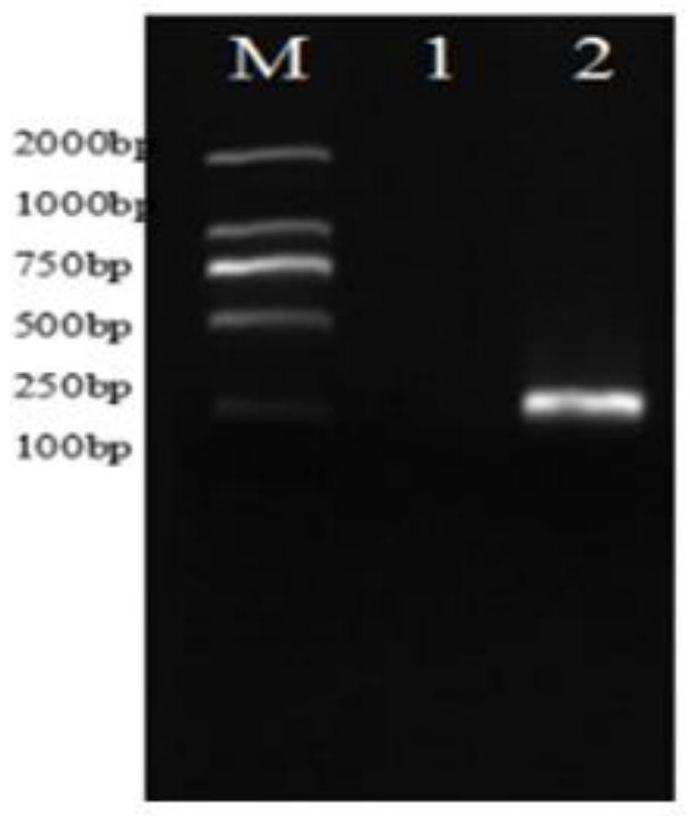Transgenic method for improving cutting rooting rate of white birch
A technology of rooting rate and birch, applied in the directions of biochemical equipment and methods, genetic engineering, plant genetic improvement, etc., can solve the problems of high technical and conditional requirements, large-scale supply of planting raw materials, unsatisfactory rooting rate, etc. The effect of increasing the rooting rate
- Summary
- Abstract
- Description
- Claims
- Application Information
AI Technical Summary
Problems solved by technology
Method used
Image
Examples
Embodiment 1
[0033] Example 1 Construction of BpmiR156 Overexpression Birch Strains
[0034] 1. Cloning of BpmiR156 gene
[0035] According to birch genome and transcriptome data (https: / / genomevolution.org / CoGe / GenomeInfo.pl?gid=35080), gene-specific primers miR156-F: 5'-CACCGTTTCCACATCTGGGAATAAGC-3' and miR156-R: 5'-TCAGCAGCTGTTGAAGTTGAAGG were designed -3'.
[0036] The birch cDNA was used as a template to amplify a 251bp fragment containing the mature sequence of BpmiR156, and the PCR band was detected by 1% agarose gel electrophoresis to obtain the target fragment.
[0037] PCR reaction system: 2μL 10×KOD Buffer, 2μL dNTPs (2.5mmol / L), 1.2μL MgSO 4 , 0.3 μL KOD Plus Neo, 0.6 μL miR156-F (10 μmol / L), 0.6 μL miR156-R (10 μmol / L), 2 μL template and 11.3 μL water.
[0038] PCR amplification reaction program: pre-denaturation at 94°C for 2min, denaturation at 94°C for 20s, annealing at 58°C for 20s, extension at 72°C for 15s, and extension at 72°C for 7min after 35 cycles.
[0039] The...
Embodiment 2
[0049] Example 2 Measurement of different physiological indexes of BpmiR156 birch
[0050] 1. Experimental materials
[0051] 1. Rooting and anatomical identification of BpmiR156 birch cuttings
[0052] Take the transgenic birch line with overexpression of miR156 and the non-transgenic control white birch young shoots cut into cuttings containing 2 bud points, in the substrate treated with carbendazim (50%) (black soil: peat soil: vermiculite = 2: 2:1) medium cuttings, attached with plastic wrap, placed in a plant culture room for cultivation, the cultivation conditions are: room temperature 25°C, 16h light / 8h dark. After 30 days of cutting, the rooting rate of the miR156-overexpressed birch line and control birch cuttings was counted. And at 0d, 3d, 6d, 9d, 12d, 15d, 18d, 21d after cutting, cut the 5mm long stem segments at the base of the cuttings for the preparation of paraffin sections
[0053] 2. Experimental methods and results
[0054] 1. Distribution of endogenous ...
PUM
 Login to View More
Login to View More Abstract
Description
Claims
Application Information
 Login to View More
Login to View More - R&D
- Intellectual Property
- Life Sciences
- Materials
- Tech Scout
- Unparalleled Data Quality
- Higher Quality Content
- 60% Fewer Hallucinations
Browse by: Latest US Patents, China's latest patents, Technical Efficacy Thesaurus, Application Domain, Technology Topic, Popular Technical Reports.
© 2025 PatSnap. All rights reserved.Legal|Privacy policy|Modern Slavery Act Transparency Statement|Sitemap|About US| Contact US: help@patsnap.com



